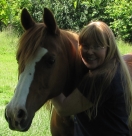The world is awash with all manner of concoctions which promise to ameliorate any perceived malady of skin and hair. These lotions and potions run the gamut from common ingredients one finds in the food pantry, to highly secret – and, of course, very rare – balms for the aristocracy. We are encouraged to beautify, detoxify, de-wrinkle, detangle, plump up, shine up, colorize, emphasize, exfoliate, erase, tone, and protect.
Hair – in the “correct” place – is valued; otherwise, it is cut, waxed or shaved from existence. We have hair products to clean and condition, color, curl, straighten, add or reduce volume or frizziness.
We diet and exercise our way into the “correct” figure shape. Cellulite, especially if visible, is a four-letter word! On the other end, there is too skinny or too flat. With enough money, you can “buy” your perfect body from the plastic surgery store.
We can pamper ourselves or pay someone to pamper us. Facials, manicures, pedicures, hair care, massages, saunas, oils, hot rocks, tanning, waxing, and even mud baths.
Then we have the adornments, also known as clothes, shoes, accessories, jewelry, tattoos and piercings. Value equivalent to price. Price equivalent to worth as a human being. Or so we are taught. It’s all available, whether you want to blend in or own a one-of-a-kind. What amount of our energy and time is traded off to afford our must-have styles?
There is nothing inherently wrong with any of this! Taking care of our bodies is important. And designing, producing, selling and buying all these body-related products and services provides an outlet for creativity, discovery, and commerce.
Yet, isn’t it interesting that we don’t extend these ideals of care to the earth?
The beautiful face in the mirror is more important to us than the view out our windows. We like our nails and lawns manicured, but disregard the environmental damage done in producing these displays. The natural flora of a place is not as exciting as the exotic, just as natural beauty is shunned for artificial. Wild and scenic is valued in body art, but trivialized in the countryside.
We liberally apply sunscreen to our bodies, but ignore the thinning ozone layer. We brush dandruff off our shoulders, while we litter our roadsides. We are far less horrified by the cellulite mountains of garbage we pile on the planet than by our own. We hydrate with specialty bottled waters as we dehydrate our lakes and aquifers.
We soften our skin with lotion and harden the land with pavement. Our personal baldness is far more a concern than our rapidly thinning forests. Our antioxidant preparations often contribute to the environmental toxification we are using them to protect ourselves against. We tolerate relentless conformity of our food crops, but fight for the right of individual self expression.
We would never exfoliate to the point of scraping away the dermal layer, yet we have nearly done this to our topsoil layer. Consider the horrendous scars and voids left by strip mining; we would absolutely hide such if on our own bodies. We worry more about keeping our arteries unclogged than we do our rivers. We deodorize and purify the air inside our houses, while oblivious to the noxious fumes polluting the air outside our houses.
Maybe the greatest paradox of all: we do everything we can to extend the length of our lives, while doing nothing to make sure we have a healthy planet on which to live those extra years.
Isn’t it time we started thinking beyond our own bodies? Do our bodies really have a physical boundary anyway? Are we not part and parcel of all that is around us? Part of the whole system we call life on earth? What if we expanded our thinking to this Whole Body?
